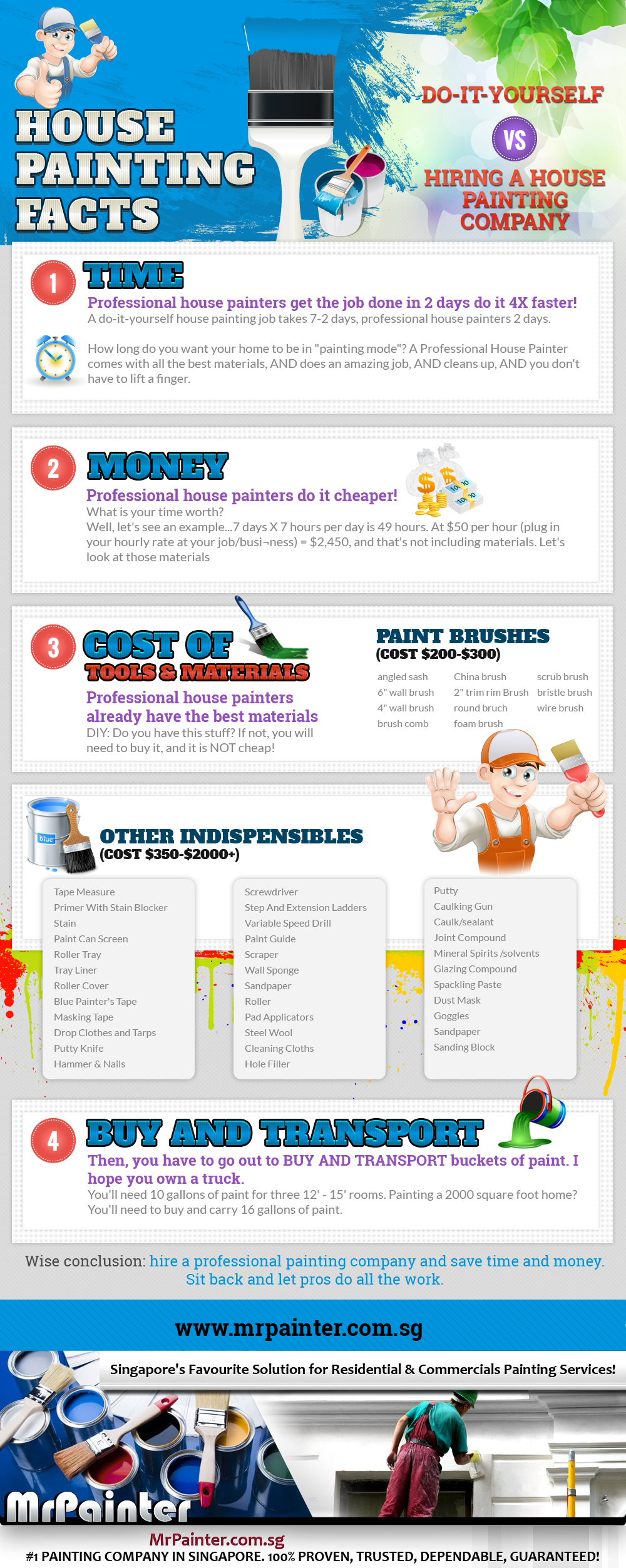Essential Seasonal Aspects Of Commercial Outside Paint: What You Should Recognize
Essential Seasonal Aspects Of Commercial Outside Paint: What You Should Recognize
Blog Article
Personnel Writer-McLamb Whalen
When you're planning a commercial exterior painting job, seasonal elements can make or damage your outcomes. You'll wish to think about just how temperature level and moisture effect paint application and drying out times. Choosing just click the next website page can ensure your paint sticks correctly and lasts longer. Yet which seasons are really the very best for this sort of job? Allow's check out the key elements that can affect your project's success.
The Impact of Temperature on Paint Application
When you're intending an industrial exterior paint project, the temperature level can significantly influence how well the paint sticks and dries.
Preferably, you want to paint when temperatures vary between 50 ° F and 85 ° F. If it's also cool, the paint may not cure appropriately, bring about issues like peeling off or cracking.
On the other hand, if it's also warm, the paint can dry also promptly, stopping correct adhesion and leading to an unequal surface.
You ought to likewise consider the time of day; morning or late afternoon supplies cooler temperature levels, which can be extra favorable.
Always examine the maker's recommendations for the certain paint you're utilizing, as they commonly give support on the suitable temperature range for optimal results.
Moisture and Its Result on Drying Times
Temperature level isn't the only ecological element that influences your industrial outside paint task; humidity plays a considerable function too. High moisture levels can reduce drying times considerably, affecting the general quality of your paint task.
When the air is saturated with moisture, the paint takes longer to cure, which can bring about problems like inadequate adhesion and a greater risk of mold growth. If you're painting on an especially damp day, be gotten ready for extensive wait times between coats.
It's important to keep track of local weather and strategy appropriately. Ideally, go for see more in between 40% and 70% for optimum drying out.
Keeping these factors in mind guarantees your job remains on track and delivers an enduring coating.
Best Seasons for Commercial Exterior Paint Projects
What's the best season for your business exterior paint jobs?
Spring and early autumn are typically your best options. Throughout these seasons, temperatures are moderate, and moisture degrees are usually reduced, developing perfect conditions for paint application and drying.
Avoid summertime's intense heat, which can trigger paint to completely dry too rapidly, resulting in poor attachment and coating. Similarly, winter season's chilly temperature levels can prevent correct drying and treating, taking the chance of the long life of your paint job.
Go for days with temperature levels between 50 ° F and 85 ° F for optimal outcomes. Keep in mind to check the local weather forecast for rain, as wet conditions can wreck your task.
Planning around these elements ensures your painting project runs efficiently and lasts much longer.
Final thought
To conclude, planning your industrial exterior painting tasks around seasonal factors to consider can make a significant distinction in the end result. By scheduling job during the perfect temperature levels and humidity degrees, you'll ensure better bond and drying out times. Keep in mind to watch on neighborhood weather prediction and choose the correct time of year-- springtime and early loss are your best choices. Taking these actions will certainly aid you achieve a resilient and expert surface that lasts.
